

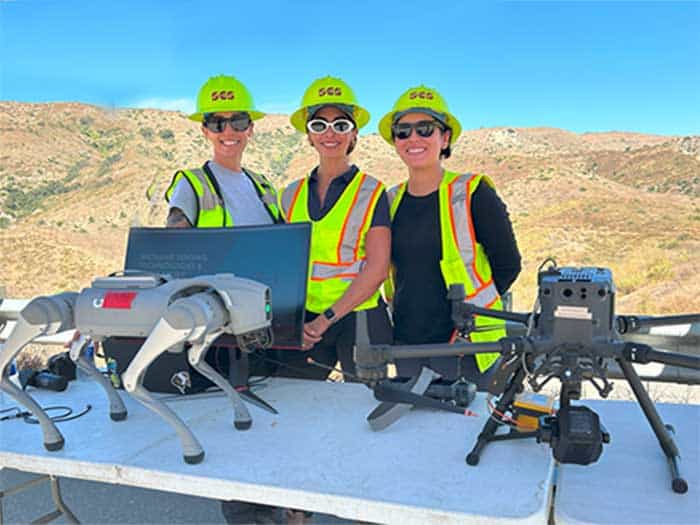
Remote Monitoring and Control Return on Investment Based on Case Studies in the U.S.
Environmental and industrial operators face mounting pressures from complex issues like tightening regulations, rising compliance costs, persistent labor shortages, and aging infrastructure. In this environment, traditional monitoring and maintenance methods, such as manual readings, paper logs, and in-person inspections, often fail to meet the demands of modern operations.
Facilities increasingly adopt Remote Monitoring and Control (RMC) systems to bridge the gap. RMC systems, originally developed to support gas and liquid management in the waste sector, now play a critical role in automating environmental compliance, optimizing equipment performance, and delivering real-time data insights across various facility types. These technologies deliver continuous data, enable remote access, and support faster, more informed decision-making. From pump stations and blowers to temperature and emissions monitoring, the shift to RMC offers not just better oversight but substantial cost savings.
Here, we highlight three real-world case studies where RMC deployments led to measurable financial return on investment and operational gains.
Cutting Air Monitoring Costs at an Industrial Facility
Air monitoring is critical to environmental compliance for landfills, renewable natural gas (RNG) operations, and solid waste facilities. These sites can emit volatile organic compounds (VOCs) and hazardous air pollutants (HAPs) through various processes, including waste decomposition, gas destruction, and material handling. Regulatory agencies require continuous or periodic monitoring to assess pollutant levels, ensure public health protection, and enforce site-specific permit conditions. Failure to comply can result in substantial fines, heightened regulatory scrutiny, and reputational harm.
Regulators required continuous air quality monitoring for a volatile organic compound and a hazardous air pollutant at one industrial site. Manual sampling, performed daily, was costing the facility roughly $1,000 per day. Compliance was non-negotiable, but the cost was becoming unsustainable.
SCS Engineers installed a $90,000 RMC air monitoring system with seven wireless air sensors and a meteorological station. The system automates alarms, regulatory reporting, and historical data logging, all now accessible in real-time.
Within three months, the system paid for itself and saves the client an estimated ~$365,000 annually. Beyond that, it provides peace of mind. Since the system was implemented, the site has avoided regulatory fines, thanks partly to the transparent, consistent data reporting regulators now receive automatically.
Preventing Leachate Tank Overflows and Overbilling
Leachate is the liquid that drains from or through a landfill and contains a complex mix of organic and inorganic compounds, including heavy metals, ammonia, and pathogens. If not properly managed, leachate can contaminate groundwater, damage infrastructure, and trigger costly environmental violations. Closed, unstaffed landfills continue to generate leachate that must be regularly monitored, stored, and hauled away for treatment. Regulatory requirements typically mandate accurate volume tracking, overflow prevention, and timely reporting to demonstrate compliance and mitigate risk.
One SCS client operated a closed landfill with an above-ground leachate tank. With no staff on-site, they faced two persistent problems: haulers had no visibility into daily volumes, leading to inefficiencies and billing confusion, and during winter, the risk of frozen pipes or tank overflow posed serious compliance and environmental hazards.

For $30,000, SCS implemented an RMC system that provided haulers with mobile access to real-time tank levels and flow data, saving the client an estimated $10,000+ annually. Adding new alarms to flag leaks, freezing temperatures, and meter fouling, problems that had previously gone undetected until damage occurred, led to an increase in the efficiency of hauler dispatching, the elimination of billing disputes, and the prevention of at least one major overflow event by the early warning system. “Without a doubt, the system paid for itself through reduced O&M costs and prevented environmental issues,” said one SCS project manager, who quoted an ROI of roughly 1.5 to 3 years, depending on site-specific variables for a system like this.
Automating Flare Restarts at a Closed Landfill
Gas collection and control systems are essential at landfills to manage the decomposition of organic waste, which generates methane, a potent greenhouse gas. Flares are a critical component of these systems, used to combust excess landfill gas and maintain regulatory compliance with air quality and greenhouse gas standards. Reliable flare operation is not only required by permits but also essential to prevent the accumulation of subsurface pressure and potential emissions. Frequent flare-outages can result in safety concerns, odor complaints, noncompliance penalties, and costly emergency callouts. At unstaffed or remote landfills, delays in flare restarts can be especially expensive and disruptive.
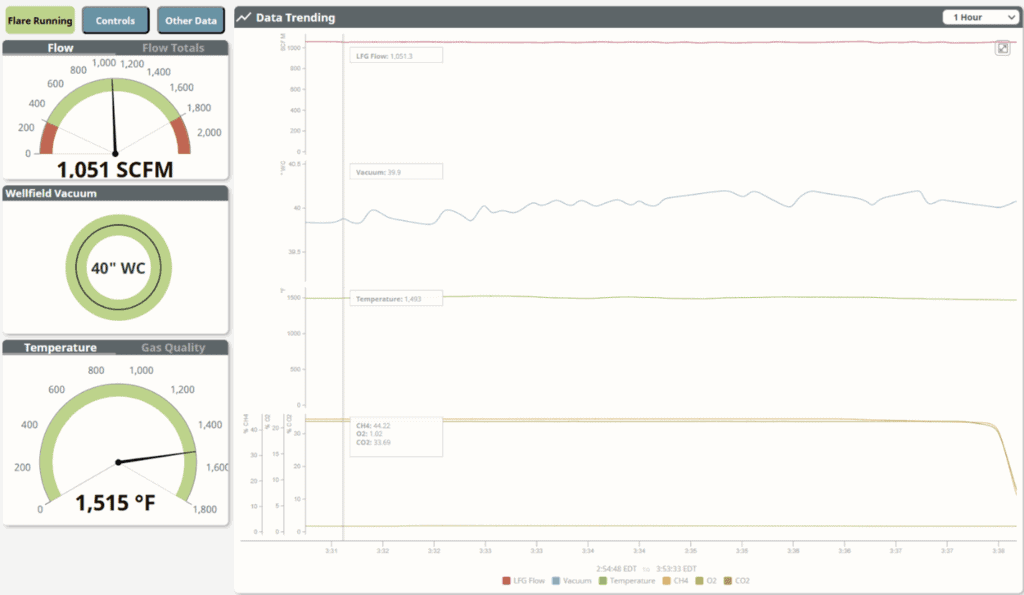
At a separate closed landfill, the client spent as much as $35,000 monthly on callouts to manually restart a flare system that frequently shut down due to power fluctuations. Each visit required a time-consuming and costly process in which an employee was required to drive to the site, reset the system, and monitor the restart.
SCS installed an RMC solution costing approximately $85,000, enabling remote flare monitoring, alarm, and restart. With the new system in place, staff could respond immediately from any connected device, eliminating the need for site visits.
The anticipated monthly savings? Roughly $30,000. The investment was a clear financial win with a projected payback period of less than three months.
Efficiency That Pays for Itself
As environmental compliance becomes tighter, labor markets shift, and equipment costs rise, operational efficiency is no longer a luxury; it’s a necessity. Whether you’re operating a landfill, a manufacturing facility, or an industrial site, the pressures are the same: reduce costs, maintain compliance, protect your workforce, preserve your infrastructure, and get a return on your investment.
RMC systems address all these pressures simultaneously. From automated gas monitoring at a landfill to VOC and HAP air monitoring at a facility to liquid hauling validation at an industrial facility, RMC systems are helping operators transform data into action and costs into savings.
In industries where budgets are scrutinized and return on investment must be proven, RMC makes a compelling case. It’s a solution that pays for itself, sometimes within months, while laying the foundation for long-term performance and resilience. The opportunity to modernize and save is right at your fingertips.
Facility Technology Resources:
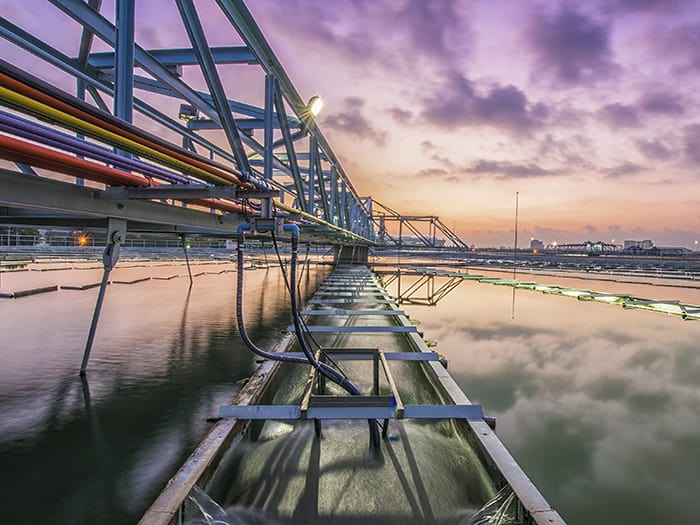
The Clean Water Act (CWA) specifies various technology-based Effluent Limitations Guidelines (ELGs) for direct and indirect dischargers. These ELGs include:
EPA evaluated available technologies to treat or remove meat and poultry (MPP) pollutants individually and in treatment trains, as shown below in subsections, based on the type of pollutant removal, including conventional pollutants, phosphorus, nitrogen, pathogens, and chlorides.
Conventional Pollutant Removal
MPP process wastewater contains oil & grease, TSS, and BOD, all conventional pollutants removed with primary treatment, which removes floating and settle-able solids. Typical treatment technologies include screening and DAF.
Facilities may add polymers, flocculants, and phosphorus-precipitating chemicals to or before the DAF. The chemical addition increases the removal of pollutants from the wastewater. Adding chemicals to remove phosphorus can help facilities meet phosphorus effluent limits. Chemical addition may not be possible for facilities that recycle materials from the DAF to the facility, as this would contaminate the raw material.
Biological/Organic Pollutant Removal an Attractive Option
Biological, physical, and chemical processes remove BOD, nitrogen, and phosphorus. Biological processes are useful to achieve low levels of BOD and nitrogen and are common at MPP facilities. Microorganisms in biological wastewater treatment require phosphorus for cell synthesis and energy transport, typically removing 10 to 30 percent of influent phosphorus. Through biological treatment, organic compounds break down with bacteria into water, CO2, N2, and CH4 products.
Biological treatment systems are often used in series to achieve high nitrogen removal rates. Wastewater flows from one system to the next, with recycle streams and returned activated sludge returning to various system locations. Some examples include:
iii. Modified Bardenpho: This is a five-stage process: anaerobic, anoxic, aerobic, anoxic, aerobic, followed by a secondary clarifier. As in the Bardenpho process, mixed liquor with high nitrate levels is recycled from the first aerobic stage to the first anoxic stage, and activated sludge from the clarifier is recycled back to the influent. The anaerobic stage at the beginning of the system results in biological phosphorus removal. Phosphate-accumulating organisms (PAOs) are recycled from the aerobic stage in the mixed liquor to the anaerobic stage. In the following aerobic stages, PAOs uptake large amounts of phosphorus.
Phosphorus Removal
As mentioned in the biological/organic pollutant removal section, some phosphorus is removed in biological treatment processes. Chemical addition and/or tertiary filters achieve low phosphorus levels.
Pathogen Removal
Disinfection destroys remaining pathogenic microorganisms and is generally required for all MPP wastewater discharged to surface waters. Chlorination/dechlorination, Ultra-Violet (UV), and some filters can meet effluent limits for pathogens and inactivate pathogenic microorganisms before discharge to surface waters.
Chloride Removal
Some MPP processes, including hides processing, meat and poultry koshering, and further processing techniques, such as curing, brining, and pickling, commonly produce wastewater streams with high levels of chlorides. Some facilities use water softening, which can also produce high chloride wastestreams. Wastewater treatment technologies commonly found at POTWs and many MPP facilities do not remove chlorides. The optimal chloride treatment technologies for a facility depend on wastewater strength, climate, land availability, and cost. High chloride wastestreams may be able to be separated from other wastestreams, which can reduce costs and energy required for treatment.
Solids Handling
Some wastewater treatment technologies produce industrial sludge. In the MPP industry, DAF and clarifiers primarily generate sludge. The sludge contains oil & grease, organic materials, nitrogen, phosphorus, and chemicals/polymers added in the treatment system. The sludge may have a high water content, which can be reduced to reduce volume and save on hauling and landfilling costs. Common dewatering technologies include gravity thickening units and the belt filter press. The sludge may be incinerated, land applied, or landfilled, depending on state, local, and federal regulations and disposal method availability.
Additional Information About PFAS Removal – Foam fractionation is a separation process that leverages the affinity of certain molecules for the air-liquid interface to isolate and concentrate them. It works by bubbling gas through a liquid, causing the target molecules to adsorb onto the surface of the bubbles and rise to the top, forming a foam that is removed. This process is useful for removing and concentrating per- and polyfluoroalkyl substances (PFAS) from water and wastewater.

An energy company using coal (many still do as they transition to renewable energy sources) uses desulfurization for its flue gas, preventing air pollution and creating gypsum as a by-product. Fly ash, another by-product of creating energy, is sold to concrete companies for a profit. The wastewater used in these green processes has high chloride. It is pretreated to ensure the chemistry of the wastewater is safe before injecting it into an EPA and state regulatory agencies-approved Class I well below drinking water aquifers.
Pretreatment helps to ensure the energy company does not decrease the capacity of the well to accept wastewater. Chemical characterization of the wastewater in the permitting process and regular sampling during operations helps ensure the fluid is non-hazardous and unchanged.
Using green practices, this energy company prevents air and water pollution, protects drinking water resources, and qualifies as a zero-discharge facility. The bottom line is that they provide energy at a reasonable cost; the company is profitable from its green practices and protects health and human life.
That’s sustainability that empowers the safety of electric utilities as they provide for our energy needs.
You are welcome to make use of SCS Engineers’ extensive library of papers, blogs, and videos for the power sector. Here are a few suggestions:
 Professional Geologist Jake Dyson is responsible for permitting, drilling, regulatory compliance, and operating Class I, II, V, and VI UIC wells. Dyson manages permitting, testing, and workovers of UIC wells and serves his clients as a technical advisor on developing and executing well construction material, formation fluid, and well testing programs, including managing drilling and construction costs, interpreting geologic data for model inputs, and developing static geologic models. You can reach Jake at SCS Engineers or on LinkedIn.
Professional Geologist Jake Dyson is responsible for permitting, drilling, regulatory compliance, and operating Class I, II, V, and VI UIC wells. Dyson manages permitting, testing, and workovers of UIC wells and serves his clients as a technical advisor on developing and executing well construction material, formation fluid, and well testing programs, including managing drilling and construction costs, interpreting geologic data for model inputs, and developing static geologic models. You can reach Jake at SCS Engineers or on LinkedIn.
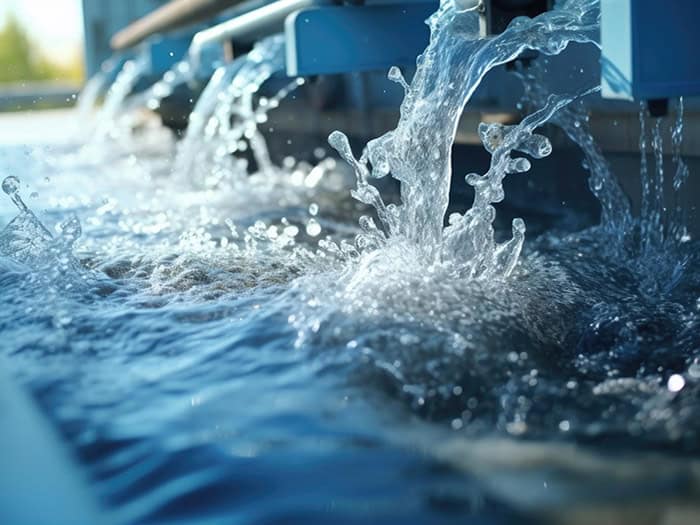
The EPA proposes updated effluent limitation guidelines (ELGs) for meat and poultry product facilities, aiming to reduce wastewater pollution, particularly nitrogen and phosphorus discharged from meat and poultry processing facilities. These changes affect meat and poultry industry facilities, including those that would apply to additional direct and indirect dischargers.
There is growing concern as local and state ELGs are also beginning to appear. These new guidelines can impact the meat and poultry industry and the food and beverage industry. In summary, the federal guidelines are influencing state and local plans.
Meat:
Poultry Processing:
Overall, the proposed changes in effluent limitation guidelines by the EPA represent a significant shift in regulatory expectations for the meat and poultry industry. SCS Engineers provides webinars and resources that provide crucial insights and guidance for industry stakeholders to navigate these changes effectively.
SCS Engineers provides these free resources:

Hydrogen sulfide (H2S) is often identified as a potential culprit of odors and nuisance complaints near municipal solid waste (MSW) landfills. Some base their complaints on information found on the Internet as fact. As experts, let’s start by saying data from other landfills or pulled from an AI browser summary online will not provide accurate answers. H2S concentrations vary widely and are unique to individual landfills.
How is H2S generated in an MSW landfill, and why do concentrations vary?
Calcium sulfate (CaSO4•2H2O, aka gypsum), the primary ingredient in wallboard (aka drywall), can be biologically converted to H2S under select and somewhat rare conditions. Specifically, seven conditions are required for the biodegradation of gypsum to H2S. See (Gypsum Association, Industry Technical Paper: Treatment and Disposal of Gypsum Board Waste (Jan. 1991); Gypsum Association, Treatment and Disposal of Gypsum Board Waste, Part II, Technical Paper (Mar. 1992).
Condition 1 – Liquid Water. The biological conversion of sulfate to H2S occurs in the aqueous phase—i.e., sufficient free liquids must be present, and sulfates must dissolve into the free liquids. Modern landfills with leachate collection systems may experience intermittent perched and discrete zones of saturation within the waste mass, particularly following periods of extended precipitation. Low-permeability confining layers (e.g., clay or clay-like soil used for intermediate cover) may temporarily trap water/leachate in discrete pockets within the landfill.
Condition 2 – Source of Soluble Sulfate. Gypsum, having the chemical formula CaSO4•2H2O, is a source of soluble sulfate. Gypsum sources include wallboard (aka drywall), flue gas desulfurization (FGD) material from coal-fired power plants, and some industrial wastes. Sulfates and sulfur compounds can also be present in lower concentrations in other waste streams, depending on what the MSW landfill accepts.
Condition 3 – Sulfate-reducing Bacteria. Sulfate-Reducing Bacteria (“SRB”) use dissolved sulfate as an electron acceptor in the oxidation of carbon. Primary SRB include Desulfovibrio and Desulfotomaculum. These SRBs, as well as many other bacteria, are commonly present in MSW landfills. However, the presence of SRB within a landfill may not be ubiquitous, and may be limited to regions where the other required conditions favor their existence and survival.
Condition 4 – Organic Material. SRBs use organic material as a food source to multiply and degrade sulfate to H2S. Carbon serves as a source of energy for the bacteria. Typical MSW has a high organic content due to a wide variety of organic materials such as wood, paper, cardboard, food, vegetative waste, and fabrics. Many communities with recycling programs help divert these waste materials for reuse and recycling.
Condition 5 – Anoxic Environment. SRBs thrive under anoxic (without oxygen) conditions. The presence of oxygen can kill SRBs. While anoxic conditions are typically not present in areas where MSW was recently disposed, they are typical in portions of MSW landfills where organic wastes have been present for at least a few months and decompose to produce methane and carbon dioxide.
Condition 6 – Appropriate pH Range. SRB reduction of sulfate to H2S is reportedly optimum within a pH range of about 7 to 8, and does not occur outside a pH range of about 4 to 9. The pH range within a typical MSW landfill falls within this activity range.
Condition 7 – Appropriate Temperature Range. SRB reproduction and H2S generation are reportedly optimum within a range of about 30 °C to 38 °C (86 °F to 100 °F). Many MSW landfills are within or a little above this optimum range. Studies of SRB in geologic environmental settings found reduced activity above about 60 °C (140 °F), and no activity above about 80 °C (176 °F). Similarly, SRB activity ceases in freezing conditions.
In summary, although the necessary conditions for H2S generation are likely intermittently present within some discrete pockets within many MSW landfills, the conditions are not likely ubiquitous throughout the waste. MSW landfill conditions and waste composition are typically highly heterogeneous with respect to both location within the landfill and time. Thus, there are zones within landfills where many, but not all of the seven required conditions are present, and H2S generation does not occur. For example, there are undoubtedly many regions within landfills where free liquids (i.e., saturated conditions) are not present and, therefore, SRB conversion of sulfates to H2S does not occur, despite the presence of the other six conditions.
Similarly, a landfill may have pockets where bulk sulfate-containing waste has been disposed of but where the internal portion of the pocket is not exposed to moisture, organics, or SRB—each a necessary condition for converting sulfate to H2S.
Considering these seven conditions and heterogeneous landfill conditions, there are too many variables to provide a reliable and defendable quantitative model for H2S generation at all MSW landfills.
Monitoring and Treating Landfill H2S Conditions
We invite you to use our free resource library to learn more about how monitoring and data collection can protect your workers and the surrounding environment.
 About the Author: Jeff Marshall, PE, is a Vice President of SCS Engineers and our National Expert on Emerging Contaminants (e.g., PFAS) and Innovative Technologies. He has over four decades of experience emphasizing environmental chemistry (e.g., hydrogen sulfide generation at MSW landfills), environmental permitting and compliance (e.g., fumigation facilities), hazardous materials/waste management, site assessment/remediation, treatment technologies, and human health risk issues. Hydrogen sulfide experience includes dozens of facilities, including landfills, coal-fired power plants, and paper mills.
About the Author: Jeff Marshall, PE, is a Vice President of SCS Engineers and our National Expert on Emerging Contaminants (e.g., PFAS) and Innovative Technologies. He has over four decades of experience emphasizing environmental chemistry (e.g., hydrogen sulfide generation at MSW landfills), environmental permitting and compliance (e.g., fumigation facilities), hazardous materials/waste management, site assessment/remediation, treatment technologies, and human health risk issues. Hydrogen sulfide experience includes dozens of facilities, including landfills, coal-fired power plants, and paper mills.
Join SCS Engineers as Sponsors and Exhibitors at the 2025 SDHF Annual Affordable Housing and Community Development Conference in San Diego, CA on October 16th, 2025. The San Diego Housing Federation’s annual Affordable Housing and Community Development Conference brings together more than 600 developers, builders, architects, lenders, property managers, service providers, elected and agency officials and staff, community, and business leaders to share innovative approaches to affordable housing, community, and economic development. We are proud sponsors of the event and we look forward to seeing you there.
Follow the link to find more information about the conference: https://www.housingsandiego.org/events-2/2025-affordable-housing-amp-community-development-conference
Join SCS Engineers at the 2025 National Brownfields Training Conference at McCormick Place in Chicago, August 5–8, 2025.
Brownfields 2025 brings together professionals from government, industry, and the community to explore best practices for the remediation and redevelopment of brownfield sites. As the premier event focused on transforming contaminated properties into community assets, Brownfields 2025 offers more than 180 interactive sessions, mobile workshops, and networking events. Attendees will connect with peers and decision-makers, discover new resources and technical assistance, and explore the latest innovations in brownfields cleanup and sustainable redevelopment.
Stop by and visit SCS Engineers at Booth 314 to connect with our experts, learn more about our work in brownfields remediation, and explore how we help communities turn environmental challenges into revitalization opportunities. Don’t miss this opportunity to connect with SCS Engineers and the broader brownfields community in the heart of the Windy City – register now!
Look for these special presentations:
 Let Me Tell You a Story – Brownfields and StoryMaps with Megan Husic, a Nevada Certified Environmental Manager and a Project Manager at SCS Engineers. Megan’s presentation explores the power of Geographic Information Systems (GIS) and ESRI StoryMaps in transforming how we engage with stakeholders and communities, particularly in the context of brownfield projects. StoryMaps is a dynamic tool that integrates maps with narrative text, images, and multimedia to create compelling and interactive stories. StoryMaps are valuable for educating the audience about Brownfields, showcasing the potential of Brownfields revitalization, providing background and current site information, and outlining plans and community benefits. Learn the essential steps and considerations for creating an effective StoryMap, including the importance of assembling a skilled team, and discover how it can revolutionize brownfield project communication and stakeholder engagement.
Let Me Tell You a Story – Brownfields and StoryMaps with Megan Husic, a Nevada Certified Environmental Manager and a Project Manager at SCS Engineers. Megan’s presentation explores the power of Geographic Information Systems (GIS) and ESRI StoryMaps in transforming how we engage with stakeholders and communities, particularly in the context of brownfield projects. StoryMaps is a dynamic tool that integrates maps with narrative text, images, and multimedia to create compelling and interactive stories. StoryMaps are valuable for educating the audience about Brownfields, showcasing the potential of Brownfields revitalization, providing background and current site information, and outlining plans and community benefits. Learn the essential steps and considerations for creating an effective StoryMap, including the importance of assembling a skilled team, and discover how it can revolutionize brownfield project communication and stakeholder engagement.
 Transforming Brownfield Redevelopment with GIS: A Comprehensive Approach with Kayla Ouellette, GIS Manager at SCS Engineers. Kayla’s presentation explores the transformative role of Geographic Information Systems (GIS) in managing and communicating the complexities of brownfield projects. Kayla delves into leveraging GIS technology to enhance project planning, data management, and stakeholder engagement. Key topics include an overview of the GIS environment, access to GIS software, and practical applications, including site selection and ranking, demographic analysis, data management, and community outreach. Her presentation emphasizes the importance of starting with the end in mind, ensuring that you tailor GIS solutions to meet specific project needs and reporting requirements. By utilizing GIS, project teams can improve accuracy, efficiency, and communication, ultimately leading to more successful brownfield redevelopment efforts.
Transforming Brownfield Redevelopment with GIS: A Comprehensive Approach with Kayla Ouellette, GIS Manager at SCS Engineers. Kayla’s presentation explores the transformative role of Geographic Information Systems (GIS) in managing and communicating the complexities of brownfield projects. Kayla delves into leveraging GIS technology to enhance project planning, data management, and stakeholder engagement. Key topics include an overview of the GIS environment, access to GIS software, and practical applications, including site selection and ranking, demographic analysis, data management, and community outreach. Her presentation emphasizes the importance of starting with the end in mind, ensuring that you tailor GIS solutions to meet specific project needs and reporting requirements. By utilizing GIS, project teams can improve accuracy, efficiency, and communication, ultimately leading to more successful brownfield redevelopment efforts.

Melissa Schick joins Alyssa Kuhn and Aditi Chakravarty of EPA, Richard Jenkins of Pasco County, FL, for a Topic Talk on Brownfields Challenges Created through Increasing Frequency and Intensity of Hurricanes. U.S. EPA Region 4 had a challenging hurricane season with Hurricanes Helene and Milton which made landfall on Florida’s Gulf Coast on September 26 and October 9, respectively. Helene’s total costs were $78.7 billion in damages and an estimated total of $59.6 billion in damage and needs were attributed to North Carolina, alone. When we add in other disasters such as wild fires, tornados, and floods the amount of debris to manage is a major challenge for states and the waste industry too.

Eric Williams is a trainer for the Brownfields University pre-conference training event, designed to provide a curriculum of core brownfield concepts and practices before the full educational program content. Eric will be providing his “Stack & Sequence – Strategically Using Multiple Sources of Brownfields Funding” training module, which is the subject of multiple papers and presentations. Public agencies and non-profits will benefit by learning how to best promote redevelopment through utilizing multiple capital sources.
Join us for a relaxed evening of networking, drinks, and city views as we celebrate our shared commitment to Brownfields Redevelopment. Taking place Thursday, August 7, 2025 from 7 – 9PM at the VU Rooftop Lounge.

SCS Engineers proudly sponsors the 2025 CALED Annual Conference, taking place May 7–9 at the DoubleTree by Hilton Hotel Ontario Airport in Ontario, CA. Project Director Eric William will present “Repositioning Environmentally Challenged Urban Infill Redevelopment Sites,” where he’ll share strategies to transform underutilized properties into productive community assets. The conference brings together economic development professionals from across the state to celebrate those who are “Growing Economies from the Ground Up” and provide valuable opportunities to learn, connect, and collaborate. Register now!
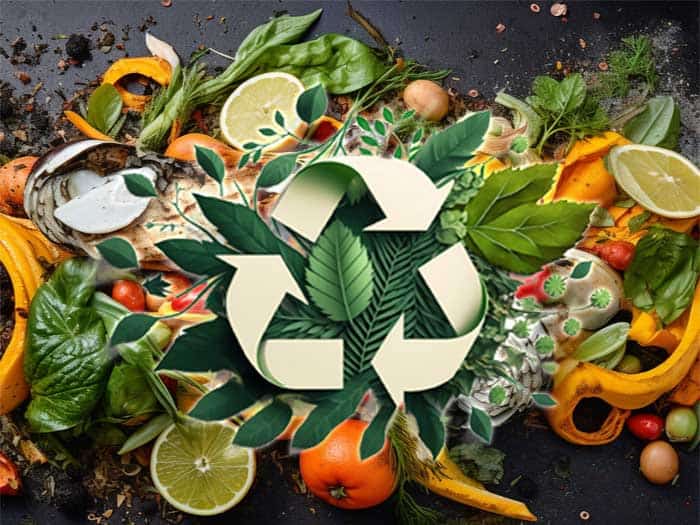
A third of the food raised or prepared does not make it from farm or factory to fork. Producing uneaten food squanders a whole host of resources—seeds, water, energy, land, fertilizer, hours of labor, and financial capital—generating greenhouse gases at every stage, including methane when organic matter lands in the global rubbish bin. The food we waste is responsible for roughly 8 percent of global emissions. Greg McCarron discusses how composting and anaerobic digestion turn organic waste into a beneficial product in Waste Management & Research, Volume 43, Issue 4.
The trend in the United States is towards using ASP systems to process food scrap materials. Recent examples by private companies involve the composting of food processing residuals. One company implemented a turned windrow compost project for sustainability reasons and to produce organic fertilizer to grow organic food products, which continue to grow in demand. Another company is pursuing an ASP compost project as land application regulations are changing, which are affecting America’s farms and farmers, and requiring enhanced organic management practices.
Anaerobic Digestion (AD) involves decomposing organic waste in an oxygen-deficient atmosphere, producing methane-rich biogas. Historically, AD has been used to process low solids/wet organic materials, such as manure, biosolids, and liquid industrial waste. To manage food waste, three types of AD facilities are increasingly being utilized in the United States: (1) stand-alone food waste digesters, (2) on-farm digesters that co-digest food waste and manure, and (3) digesters at water resource recovery facilities that co-digest food waste and biosolids.
 About the Author: As a Vice President, Greg McCarron oversees SCS Engineers’ nationwide organics management initiative, which includes edible food rescue, composting, and anaerobic digestion. Greg is SCS’s National Expert on Organics and works closely with national, regional, and local clients. His experience includes the design, planning, permitting, regulatory support, construction oversight, system start-up, economic analysis, and technology assessment projects for municipal and private clients. His turn-key projects typically involve feasibility studies, due diligence evaluations, facility siting, site investigations, environmental studies, permitting, design, and construction and operation services. Facilities include compost facilities, landfills, landfill gas control facilities, and support facilities (e.g., roadways, stormwater, utilities). Other projects include waste composition studies, compliance reports, and preparing various procurement documents. Reach out to Greg at or on LinkedIn.
About the Author: As a Vice President, Greg McCarron oversees SCS Engineers’ nationwide organics management initiative, which includes edible food rescue, composting, and anaerobic digestion. Greg is SCS’s National Expert on Organics and works closely with national, regional, and local clients. His experience includes the design, planning, permitting, regulatory support, construction oversight, system start-up, economic analysis, and technology assessment projects for municipal and private clients. His turn-key projects typically involve feasibility studies, due diligence evaluations, facility siting, site investigations, environmental studies, permitting, design, and construction and operation services. Facilities include compost facilities, landfills, landfill gas control facilities, and support facilities (e.g., roadways, stormwater, utilities). Other projects include waste composition studies, compliance reports, and preparing various procurement documents. Reach out to Greg at or on LinkedIn.
Additional Composting Resources:
Join SCS Engineers and San Diego Environmental Professionals for a case study of a real PFAS investigation at a commercial airport, Santa Maria public airport. Speaker and SCS Engineers Project Manager Chuck Houser will be sharing some of the experiences, pitfalls, and takeaways from doing this investigation.